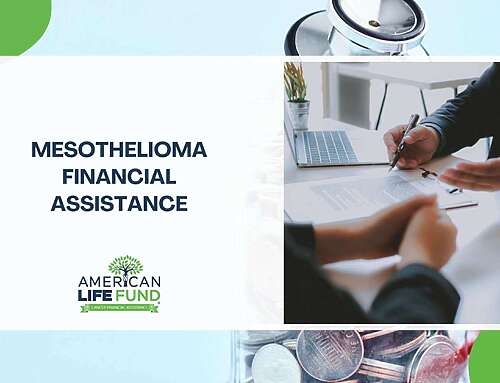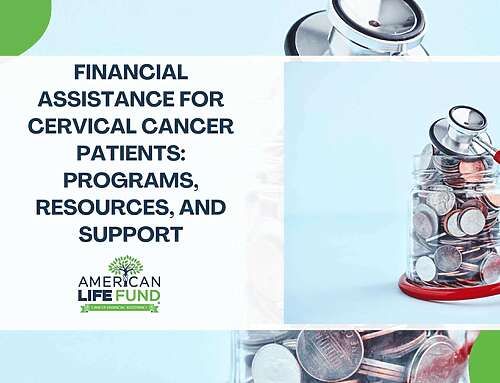When dealing with cancer, the last thing you want to worry about is money. Yet, the costs can pile up quickly, from medical expenses for treatments and medications to unexpected out-of-pocket expenses that insurance doesn’t cover. Many find themselves facing a mountain of bills at a time when their focus should be on healing.
Thankfully, there are ways to help manage these financial stresses. Tax breaks and deductions can offer some relief, reducing the impact of medical and dental expenses and other costs. Additionally, a viatical settlement, or selling your life insurance policy to a third party, can provide immediate funds to cover expenses, offering a practical solution when you need it most.
Below we will walk through the various tax benefits available to cancer patients, how to make the most of them, and why a viatical settlement might be the best option for those looking for financial peace of mind.
Understanding the Full Costs of Cancer Treatment
Going through cancer treatment affects every aspect of a patient’s life. Understanding the full scope of these costs is important to managing them effectively. The expenses associated with cancer treatment can be broadly categorized into two types: direct medical expenses and indirect out-of-pocket expenses.
Direct Medical Expenses: These include costs like hospital stays, chemotherapy, radiation therapy, surgery, prescription medications, and follow-up visits. For instance, the average cost of chemotherapy ranges from $10,000 to $200,000 or more, depending on the type of cancer and treatment plan (American Cancer Society).
Indirect Out-of-Pocket Expenses: These expenses include non-medical costs, such as transportation to treatment centers, home care, and loss of income due to time off work. A study found that the average cancer patient can incur nearly $5,000 in annual out-of-pocket expenses (National Cancer Institute).
Additionally, many cancer patients may face additional expenses like specialized dental care due to treatment side effects, which fall under medical and dental expenses. Other unforeseen costs, such as burial expenses for end-of-life planning, also add to the financial weight on families.
Strategies to Pay for Cancer Treatment: Insurance, Savings, and Assistance
Paying for cancer treatment often requires a varied approach. While health insurance may cover a portion of the medical expenses, there are often gaps that lead to out-of-pocket expenses. Here are some common ways patients can cover these costs:
- Health Insurance and Out-of-Pocket Costs: Most patients rely on health insurance to cover major treatments, but even with good coverage, there can be high deductible expenses and copays. Some plans may not cover all necessary treatments or may limit coverage for experimental therapies, leaving patients with additional bills to pay.
- Savings and Personal Resources: Many turn to their savings or retirement funds to pay for treatment. However, this can be risky as it depletes resources meant for future financial security. It’s also important to account for other additional expenses like daily living costs, which don’t pause during treatment.
- Financial Assistance Programs: There are various programs available to help with the costs, such as grants from non-profit organizations, patient assistance programs from pharmaceutical companies, and government aid. These programs can cover specific costs like medical expense deductions or help with burial expenses if needed.
- Viatical Settlements: For those with a life insurance policy, a viatical settlement can be a valuable option. By selling your policy, you can receive a lump sum of cash to cover immediate expenses, such as living expenses, medical expenses, or other treatment-related costs. This option can provide quick relief, reducing the financial stress and allowing you to focus on your health. And best of all, it’s tax free!
Eligibility for Cancer Tax Breaks: Key Tax Deductions and Benefits
Several tax breaks and deductions are specifically designed to offset the costs associated with medical expenses. Here’s what you need to know about eligibility:
Medical Expense Deductions: The IRS allows you to deduct medical and dental expenses that exceed 7.5% of your adjusted gross income (AGI). This includes a wide range of costs, such as doctor visits, prescription medications, hospital stays, and even certain out-of-pocket expenses related to cancer care. To claim these deductions, you’ll need to itemize your deductions on your tax return and keep detailed records of all qualifying expenses (IRS).
Example of Deductible Medical Expenses
Cancer patients can deduct a wide range of medical expenses that exceed 7.5% of their adjusted gross income (AGI). For example, if your AGI is $70,000, and you incurred the following medical expenses over the year, you could potentially deduct $12,500 from your taxable income.
Breakdown of Deductible Medical Expenses:
- Chemotherapy Treatments: $35,000
- Radiation Therapy: $20,000
- Surgery: $15,000
- Prescription Medications: $5,000
- Transportation to Treatment Centers: $1,500 (assuming 3,000 miles driven at $0.56/mile IRS rate)
- Home Modifications (e.g., wheelchair ramp): $3,000
- Medical Supplies (e.g., bandages, special clothing): $1,000
Total Medical Expenses: $80,500
AGI: $70,000
7.5% of AGI: $5,250
Deductible Amount: $80,500 – $5,250 = $75,250
Example of Deductible Burial Expenses
End-of-life expenses, such as burial costs, can also be significant and may qualify for tax deductions. For example, if your loved one’s estate incurred $15,000 in burial expenses, and these were necessary and directly related to the medical condition, these costs could be deducted from the estate’s taxable income under certain conditions.
Breakdown of Burial Expenses:
- Funeral Service: $7,000
- Casket: $4,000
- Burial Plot: $3,000
- Headstone: $1,000
Total Burial Expenses: $15,000
Deductible Amount: (If all expenses qualify and meet IRS guidelines, the full $15,000 might be deductible, depending on the estate’s situation and local tax laws.)
Example of State-Specific Tax Benefits
Some states offer additional tax benefits that can ease the financial burden on cancer patients. For instance, in California, there is a specific deduction for long-term care insurance premiums that exceeds 7.5% of your adjusted gross income, which is not available at the federal level. Let’s consider a scenario where a California resident with an AGI of $80,000 has long-term care insurance premiums of $10,000.
California State Tax Benefit Example:
- AGI: $80,000
- 7.5% of AGI: $6,000
- Total Long-Term Care Insurance Premiums: $10,000
- Deductible Amount (State Level): $10,000 – $6,000 = $4,000
Additionally, New York allows deductions for medical expenses exceeding 10% of your New York adjusted gross income (NYAGI). If your NYAGI is $90,000, and you have $12,000 in qualifying medical expenses:
- NYAGI: $90,000
- 10% of NYAGI: $9,000
- Total Medical Expenses: $12,000
- Deductible Amount (State Level): $12,000 – $9,000 = $3,000
These examples illustrate how cancer patients and their families can significantly reduce their taxable income by carefully tracking and claiming eligible medical expenses, burial costs, and taking advantage of state-specific tax benefits.
Maximizing Tax Benefits with a Health Savings Account (HSA)
A Health Savings Account (HSA) can be invaluable for managing cancer treatment costs. Designed for individuals with high-deductible health plans, an HSA offers several tax benefits that can help offset medical expenses.
- Tax Advantages: Contributions to an HSA are tax-deductible, reducing your taxable income. The funds grow tax-free, and withdrawals for qualified medical expenses are also tax-free. This triple tax benefit makes HSAs an effective way to manage cancer-related costs without increasing your tax burden.
- Coverage for Medical Expenses: HSAs can cover a wide range of cancer-related expenses. This flexibility allows you to use HSA funds for out-of-pocket expenses that insurance doesn’t cover, including copays and deductibles.
- Long-Term Financial Planning: HSA funds roll over year to year, creating a reserve for future medical expenses or other health-related needs. This feature helps maintain financial stability while managing the ongoing costs of cancer care.
Leveraging an HSA’s tax benefits provides a financial cushion for both expected and unexpected expenses during cancer treatment, offering peace of mind when it’s needed most.
Viatical Settlements: A Tax Free Financial Solution for Cancer Patients
One often-overlooked option for alleviating cancer costs is a viatical settlement. This option involves selling your life insurance policy to a third party for a lump sum of cash, which is usually more than the policy’s cash surrender value but less than its death benefit. Here’s why a viatical settlement might be a practical choice:
Immediate Access to Funds
A viatical settlement provides immediate financial relief, which can be used to cover various expenses and any other costs associated with cancer treatment. This is especially useful for those who need quick access to cash without waiting for tax returns or the liquidation of other assets.
Flexibility in Use
The funds from a viatical settlement are not restricted to medical use. You can use the money to pay off debts, cover living expenses, fund travel for treatment, or even improve your quality of life by allowing you to focus on your well-being rather than financial worries.
No Repayment Required
Unlike loans or credit lines, a viatical settlement does not require repayment. This means you won’t be burdened with additional debt or interest payments. The money is yours to use as you see fit, without the stress of future financial obligations.
A Practical Solution for Financial Peace of Mind
For many, the idea of a viatical settlement is initially met with hesitation. However, it’s a practical solution that provides peace of mind by offering a straightforward way to manage expenses and focus on your health and recovery. It’s especially beneficial for those who do not have other assets to liquidate or prefer not to use their savings.
Considering a viatical settlement can be a helpful choice, allowing you to regain control over your financial situation. If you’re interested in learning more about how this option could benefit you, American Life Fund is here to discuss your options.
Conclusion
The financial stress of cancer often goes beyond just the cost of treatment, touching every aspect of daily life. Using available tax deductions, such as the medical expense deduction or savings through an HSA, can reduce the financial impact of medical care. These tax benefits can help offset costs not covered by insurance, including insurance premiums and other out-of-pocket expenses.
Considering a viatical settlement can provide immediate financial relief, allowing you to cover medical bills and other expenses without the delay of a tax deduction. Taking advantage of these options can help you focus on your recovery. For those interested in exploring viatical settlements, contact American Life Fund to learn how you can turn your life insurance policy into a source of financial support.





